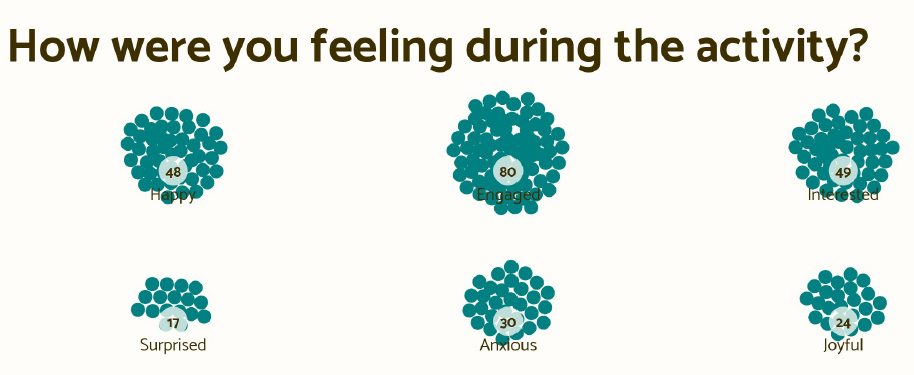Need Valuable Feedback? Make Giving Feedback Engaging
People are now officially over-surveyed. We can see it in the metrics—response rates are falling. And we can even feel it in our reaction— “Ugh, no, I don’t have time to rate that customer service call.”
But sometimes, we still need feedback, so how can we make giving feedback much more engaging?
Think out of the feedback box!
The standard survey is kind of boring, and people tend to race through them without reading the directions. What if we could make the act of answering the questions interesting? Recently I asked a small group of people to tell me how they felt about a presentation by drawing their answers using Piccles. Here’s what I got:
Other unconventional places I’ve captured feedback are on digital whiteboards (Jamboard for free and Miro for a fee).
If you need to field a more standard survey, check out Typeform, the rare survey platform where engagement is built into each interaction.
Scyroncrous or Ascrynous?
When I say survey, do you think asynchronous delivery? Yep! Most people do, but while we already have people convened for a meeting or an event, could we get some valuable insights? Yep, we can (and the response rates are waaaaayyyy higher).
I love visual voting. Zoom Meetings (not Zoom Webinar, yes, I learned the hard way) has a nifty tool called ‘annotate.’ Set up annotate in Zoom so everyone can participate and drop in a slide and let your participants vote. Here’s an example:
Also, remember that when you have enough participants and enough active chatters, you can ask questions in the chat, and their feedback can give you valid qualitative research responses.
Let them in on the results.
Seeing everyone’s responses is nearly always engaging. When it’s appropriate, share the results. Mentimeter’s polls, word clouds, and open-ended questions display results in real-time. I use this platform for participant collaboration, and it gives me valuable insights into how activities are landing.
Bonus!
Want to make slogging through a bunch of open-ended responses more engaging for you? I’ve been playing with Holler. It is a Language Learning Model AI that analyzes qualitative feedback. Warning: it’s not infallible, so cross-check its responses. However, I got far more creative with slicing and dicing data and received directional results far faster than doing it by hand.




